The History of Belfast, Maine
In the spring of 1770 Belfast was settled by Scots–Irish families from Londonderry, New Hampshire. Legend has it that the name Belfast, after the Northern Ireland city, was chosen by a coin-toss. Fear of British attack led these original proprietors to abandon the settlement during the American Revolution, but they returned in the 1780s to build a vibrant, prosperous outpost that would become the market center for the outlying area.
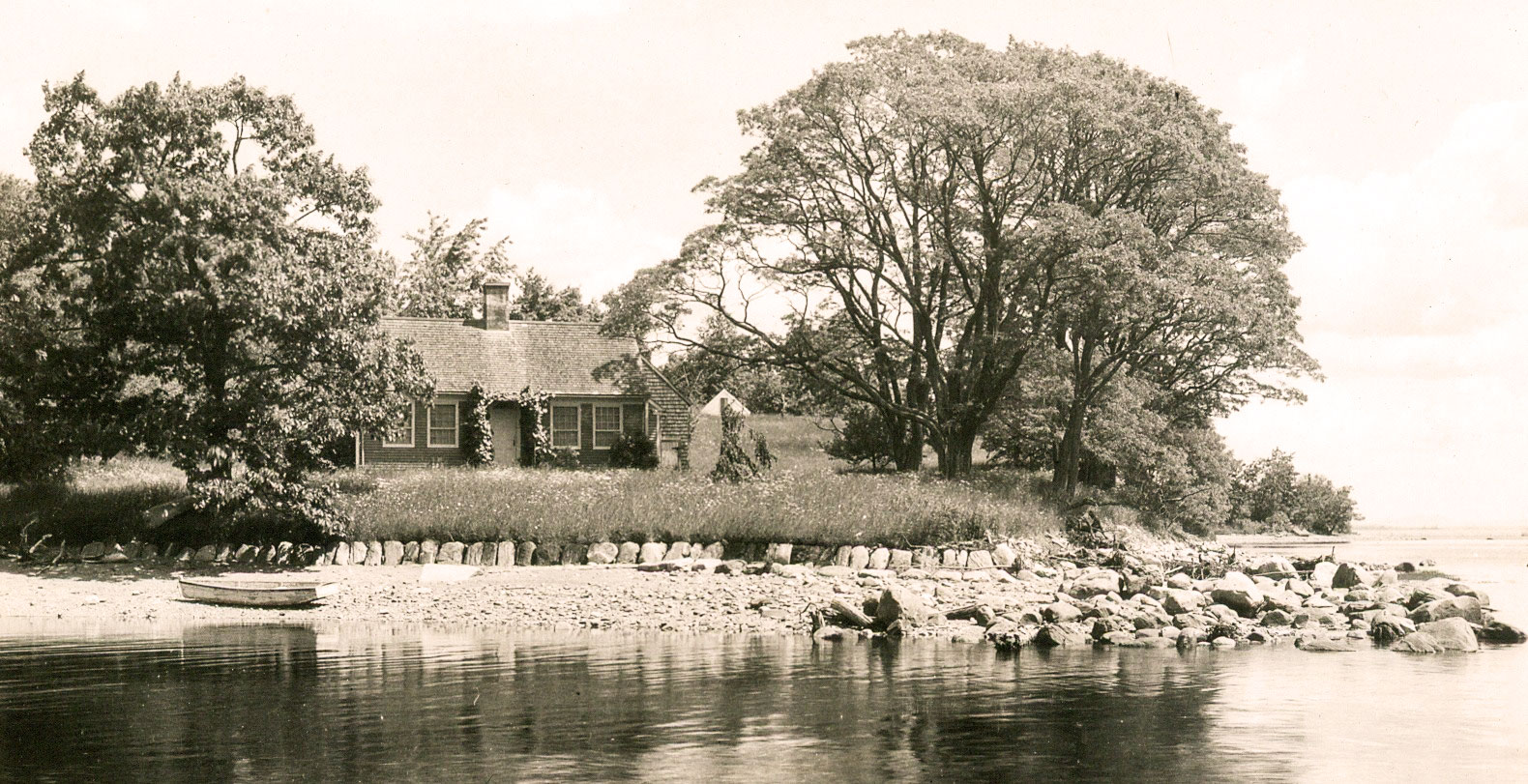
Settled by Scots-Irish families from Londonderry, New Hampshire in 1770,
Belfast was on August 29, 1769 that the deed to what was to become Belfast was issued to the sixteen “Original Proprietors.” The land was purchased from the heirs of General Samuel Waldo and consisted of 97,359 acres. The price was 1500 pounds or twenty cents per acre at the existing value of money. Once the property was purchased it was divided into 51 rights or shares. Thirty-four men secured rights- most rights consisted of 100 +- acres and some received more than one share. John Mitchell, the surveyor who first learned of the land in the wilderness which was for sale, was awarded six rights. Among those original owners were 16 yeomen, five gentlemen, two weavers, and one each, merchant, blacksmith, joiner and wheelwright.
Maine Ulster Scots
Belfast to Belfast, the Ulster-Scots Connection, the story of two Belfasts, 3000 miles apart but linked by name, by culture and by shared traditions. This video was produced in 2018 by the Ulster-Scots Agency and Tourism Ireland celebrating the connections between Maine and Northern Ireland.
Learn more about Belfast to Belfast by visiting our Window on History programs on our Vimeo channel.
Early History
The first settlers, about thirty people including children, arrived in the spring of 1770, taking possession of their lands on both sides of the harbor. It is recorded that James Miller and family were among the first to settle on the west side, building a log cabin at what is now near the intersection of Union and Commercial streets.
On the east side, John Davidson, John Steele, William McLaughlin, and John Morrison were among the first to arrive. More joined them the following year and by June 1773, a petition to incorporate as a town was drawn up and presented at a session of the General Court in Boston. The request was granted on June 21, 1773.
According to Joseph Williamson’s History of Belfast, the name of the town was left blank. James Miller suggested the name as Belfast. Other settlers preferred Londonderry and tradition tells us the dispute was settled by tossing a penny. The first town meeting was held on November 11, 1773.
In 1775, the first taxes were raised, thirty pounds in cash for highways and fifteen pounds for preaching. The first ship, the “Jenny Miller” was launched in 1793.
During the Revolution the 100 or so inhabitants suffered greatly from lack of provisions and constant menacing by British warships. After the capture of Castine by the British in August 1779, the town was abandoned for five years. Some did not return to their homesteads, others returned to find their modest properties destroyed or stolen.
With peace restored, Belfast inhabitants resumed the hard work of building their town. They were well-established as both a maritime and market town when the break from the Commonwealth of Massachusetts occurred in 1820.
A Safe Harbor
Abundant timber, a gently sloping waterfront and proximity to varied agriculture gave rise to shipbuilding and maritime commerce, with fortunes made in both. Hundreds of wooden sailing ships were built by local shipyards and, during the 19th century, as much as 30% of the male population was employed in the maritime trades.
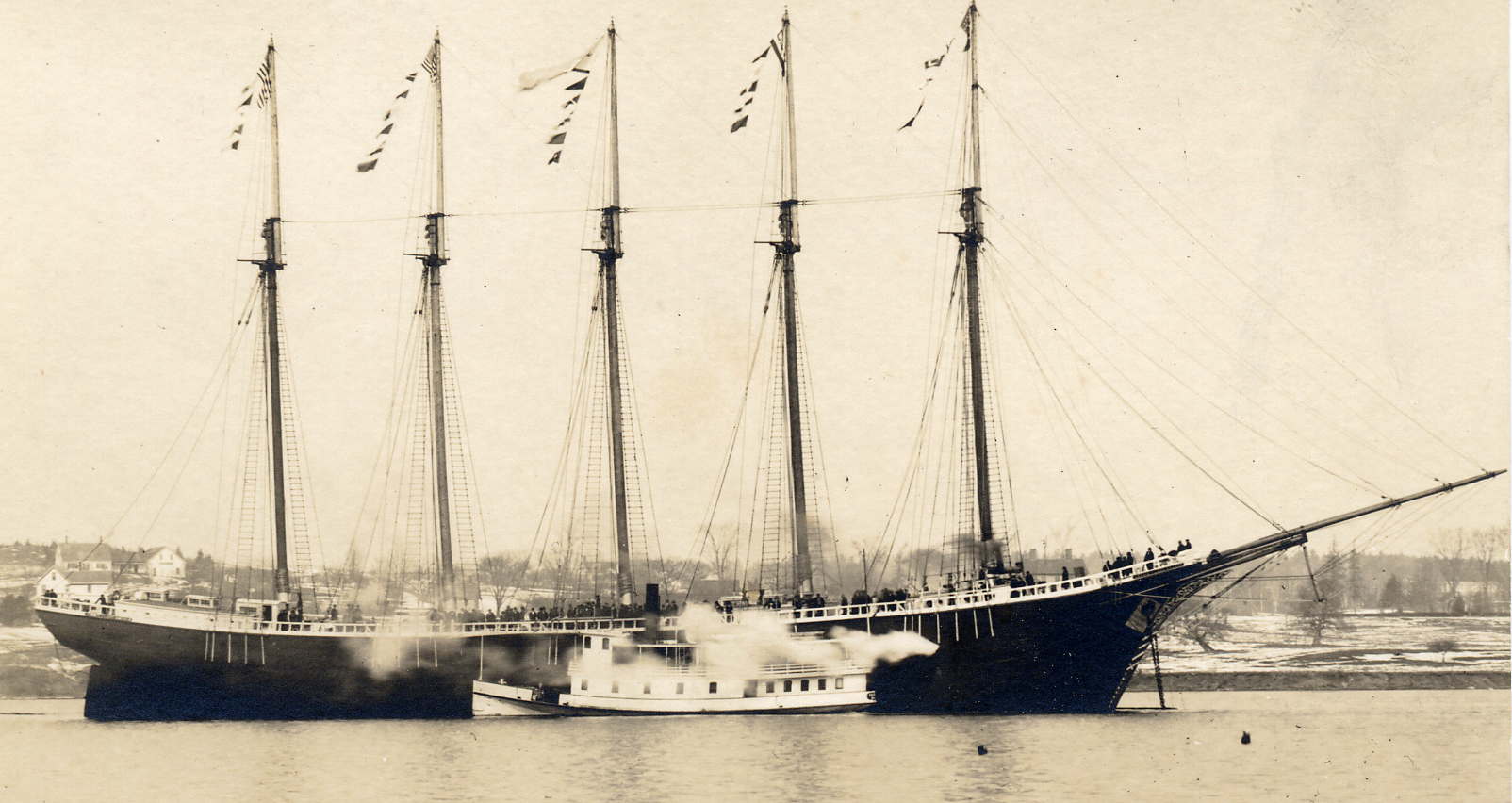
Belfast & Moosehead Lake Railroad
The Belfast & Moosehead Lake Railroad. It was chartered in 1867 and completed in 1870, 33 miles of railroad track connecting Belfast and six other towns in Waldo County.
For decades the railroad carried local agricultural products, canned sardines, shoes, fertilizer, and other locally processed or manufactured products bound for markets beyond Waldo County.
The railroad is operated by the Brooks Preservation Society, a non-profit organization dedicated to preserving Waldo County's railroad heritage. Seasonal excursion trains still run from City Point.
Prosperity & Hardship
Prosperous shipbuilders and merchants constructed the architecturally significant houses that dominate our residential neighborhoods today. Two disastrous fires consumed much of the downtown area in 1865 and 1873, but merchants rebuilt with brick, creating a pleasing and long–lasting commercial distric.
The Belfast Historic Districts, residential and commercial, are included on the National Register of Historic Places.
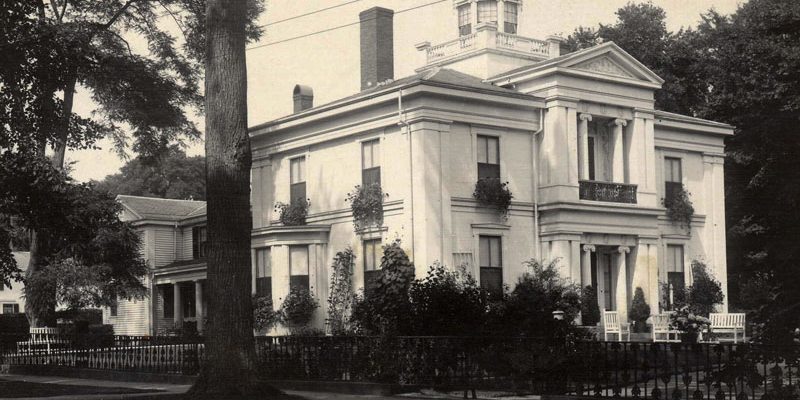
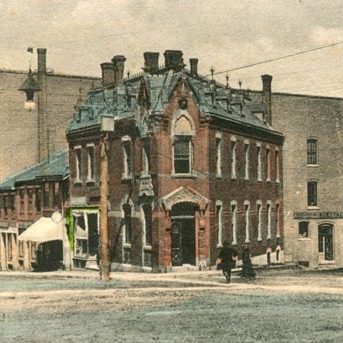
Belfast Architecture
Belfast is considered to be the best extant brick commercial district in Maine, meaning- the buildings haven’t changed much and most are still here! Learn more by following a self-guided tour
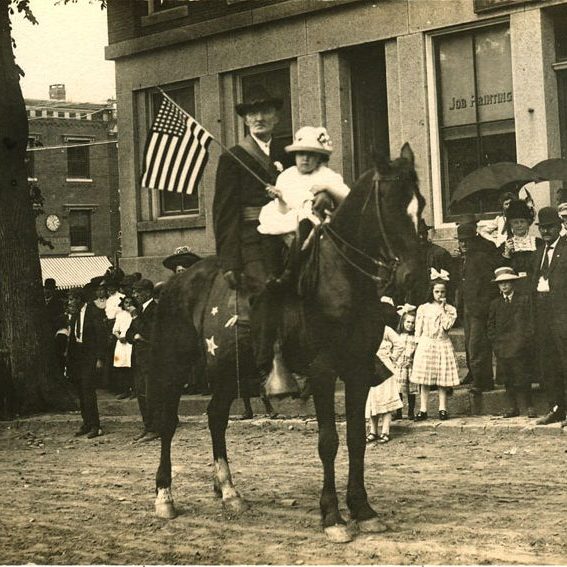
The Civil War Years
Belfastians where actively involved during this bloody period in our nation's history. Letters sent from soldiers to family back home were often shared. Read more
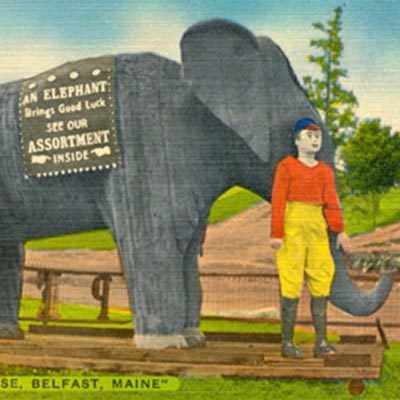
Perry's Nuthouse
Since 1926, Perry’s Nut House has been one of the most popular tourist destinations on Route One. Over the years, in addition to selling nuts, the store has sold Indian made products, fudge, and jams and jellies.
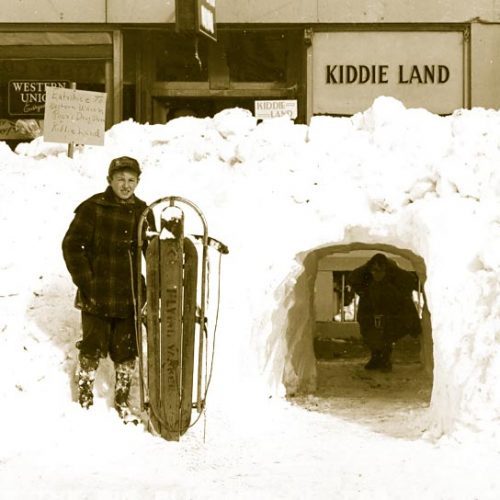
Legendary Winters
Yes, winters in Maine can be snowy and long. The huge blizzard of late February, 1952 (pictured here) caused 6-8’ drifts which had to be tunneled through to reach stores.
Mid 20th Century
The city’s prosperity, built on shipbuilding and commerce in such unglamorous cargoes as hay, ice, apples and fertilizer, began to fade as the 20th century unfolded. A four–story shoe factory dominated the industrial area, and Belfast became a blue–collar town.
By the 1950s poultry, sardine and potato companies had set up processing plants along the waterfront. Belfast called itself the “Broiler Capital of the World” and each July thousands came to eat barbecued chicken on Broiler Day.
Belfast Transformed
During the 1980's, changes to the downtown and waterfront were slowly taking place. Waterfront industries, which were once the major employers, were beginning to see their demise. Belfast began to look to revitalize and build an economy quite different from the poultry processing and shoe making companies.
One of the prominent features of the industrial waterfront was the bulk feed grain mill, built at the foot of Main Street in 1965, was used by Maplewood Poultry Company. Rail cars filled the structure up with grains, vitamins, minerals and other supplements and trucks transported the feed to poultry growers throughout Waldo County.
In 1982, after Maplewood Poultry closed, their land and building holdings, many of which were located along the waterfront, were auctioned off. The mill was purchased and, in January and February 1984, was demolished. Its removal was a major part of the revitalization of Belfast’s waterfront and of the downtown.
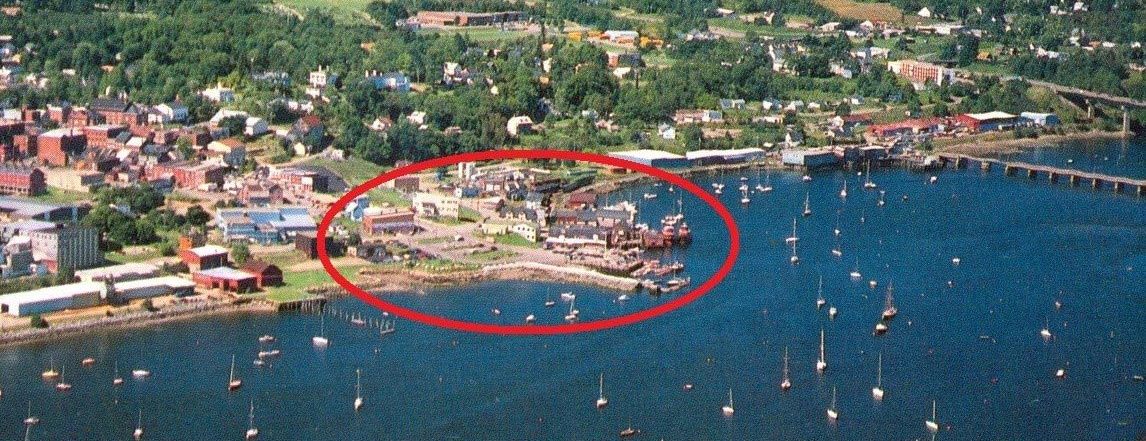
Bringing Back Belfast's Charm
By the mid-1980s the waterfront was the focus of revitalization. Big changes included parks with open space and a harbor now more conducive to cruise ships, day sailing schooners and recreational boaters. The Belfast & Moosehead Lake Railroad, with the loss of poultry business, began advertising rail and sail tourism packages. Big development plans soon emerged, proposals included hotels, condos and marinas, but were not accepted.
Restoring Belfast's Beauty
In 1962 Route 1, which had come straight through downtown via High Street, was rerouted around the city and across a new bridge. The rerouting was seen by some as the death knell for a once–vibrant shire town, but in hindsight the bypass preserved the city’s heart and soul and in the 1980s a rebirth began.
A Community Development Block Grant of $750,00 awarded to Belfast in 1983 was dedicated to the rebuilding of sidewalks, street repair in the downtown, landscaping, benches and vintage streetlamps. By 1985 the facelift of downtown was underway and with it came more businesses, seasonal visitors, and newcomers. Artists, art galleries, theater companies and cafes soon helped to create the new Belfast.
Belfast became less known as “Schmaltzport,” known for its chicken fat and feathers in the harbor, into being named one of the best “culturally cool cities.”
Today, Belfast is that rare combination of quiet small town with an active social and cultural life that is attractive to residents and visitors alike.
